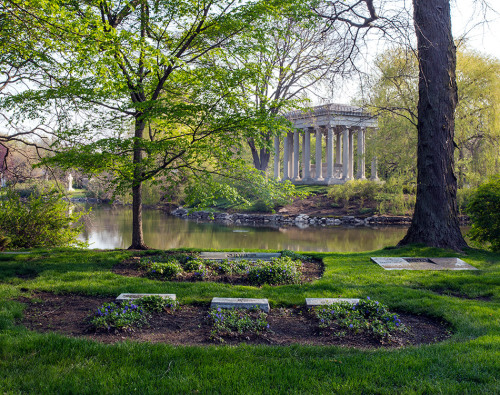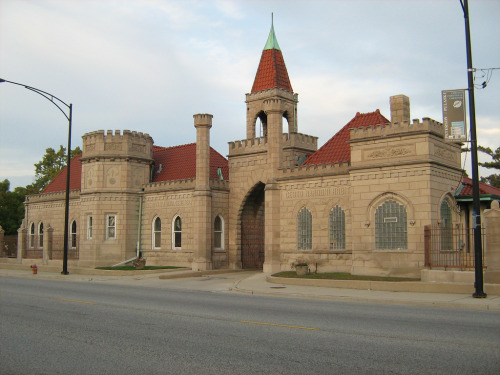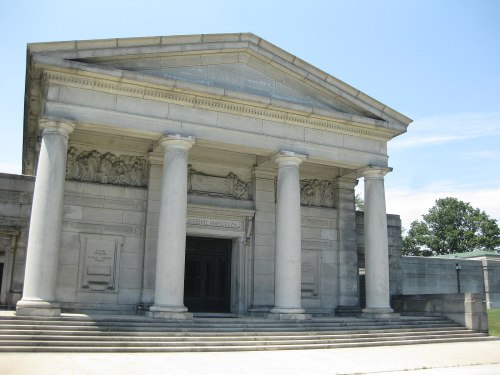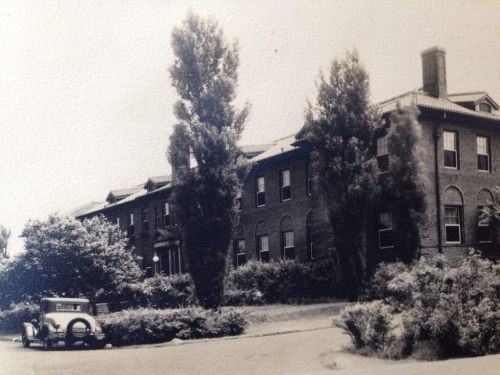With NFDA just around the corner, funeral directors from all over the world will be flocking to Chicago. While there is a lot to do and see at the convention, what about after the floor closes? If you’d like to keep in the funeral spirit, then here are 5 death-care sightseeing locations you could check out on your trip.
Graceland Cemetery and Arboretum
The Graceland Cemetery is a unique and beautiful park-like cemetery located in Northern Chicago. The cemetery houses the gravesites of some of Chicago’s most famous architects and is full of grand monuments in their honor. Walking through the over 2,000 trees in the cemetery you’ll see everything from ordinary headstones to intricately designed mausoleums. Graceland is over 150 years old and is still an active cemetery and arboretum.
The cemetery is also home to the grave of Inez Clark. The monument is a statue of a little girl with a parasol sat atop a pedestal and encased in glass. It is rumored that during the night, the statue will leave her pedestal during the night and explore the cemetery. Security guards and tour bus drivers have reported the missing statue since the 1980s.

Image: Graceland Photo Gallery
Couch Tomb
Lincoln Park in Chicago is a popular space for tourists and locals alike, but did you know that it was a public cemetery in the 1800s? The last reminder of its past is the Couch Tomb. Ira Couch was a businessman from New York. He moved to Chicago with his brother in 1836 and made his money owning hotels. He commissioned architect John M. Van Osdel to design a mausoleum to be placed in the Chicago City Cemetery. Ira Couch died in 1857 and was buried in the tomb, along with an unknown number of his other family members.
In 1860, Chicago City Cemetery became a public park and families were told to relocate the graves of their loved ones to a new cemetery. All of the graves were cleared from the land, except for the Couch Tomb. It’s likely that moving the giant marble crypt would take too much effort to move, so Ira Couch remains in his final resting place to this day.

Image: Wikimedia Commons
Bohemian National Cemetery
The Bohemian National Cemetery is a small, but beautiful cemetery located in the north of Chicago. The cemetery features a large gatehouse at the entrance, a glass fronted-columbarium, and several war memorials on its grounds. It also features a memorial for the victims of the SS Eastland disaster of 1915, where 844 passengers died when the ship rolled over in the Chicago River.
It was established in 1877 by the Czech Catholic community after a woman named Marie Silhanek was refused burial in other Catholic cemeteries in Chicago. Outraged, her community purchased 50 acres of land and started their own. In the nearly 150 years it has been operating, it has grown to be 126 acres.

Image: Wikimedia Commons
Rosehill Cemetery and Civil War Museum
Rosehill Cemetery was founded in 1859 and is Chicago’s largest cemetery. It covers over 350 acres and is filled with Victorian style monuments. Walking around the graves you’ll see obelisks, ornate urns, arches, and wrought iron gates.
The cemetery also contains a small museum inside of the administration building dedicated to the gravesites of Civil War soldiers. Fourteen Union generals, six drummer boys, and hundreds of soldiers. The museum features exhibits about those that are buried in Rosehill Cemetery and Chicago’s role in the Civil War.

Image: Wikimedia Commons
Chicago Municipal Tuberculosis Sanitarium
If you are interested in recent medical history, the Chicago Municipal Tuberculosis Sanitarium should be on your list. Opened in 1915, this 160 acre site was the largest sanitarium in the country. There were 32 buildings and room for 650 TB patients. Because tuberculosis is a highly infectious and deadly disease, the sanitarium functioned like a city for the patients that lived there. It offered education, religious services, recreation, and even had a maternity ward.
The hospital’s philosophy was that fresh air and light would help treat the sick, so there were plenty of windows and lots of outdoor activities. It was not The Sanitarium closed in 1974 after the advent of effective medicines and vaccines. After its closing, the land around it became the North Park Village Center which has public park space, housing for the elderly, and a nature preserve.

Image: Francis Archer

